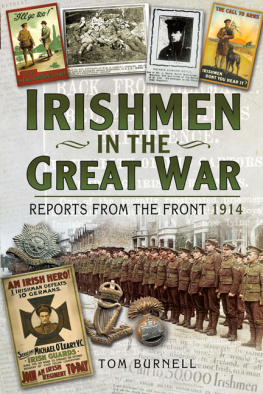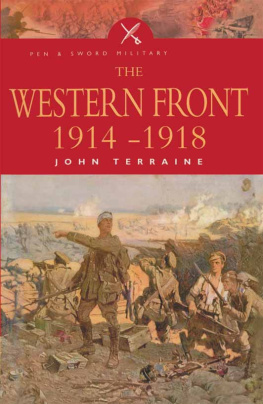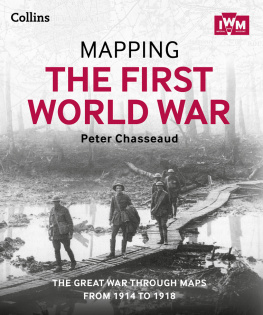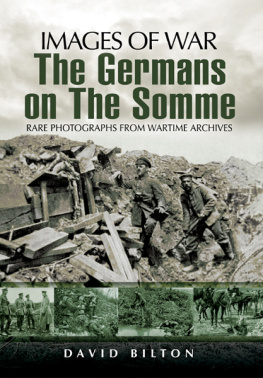
First published in Great Britain in 2014 by
Pen and Sword Military
an imprint of
Pen & Sword Books Ltd
47 Church Street
Barnsley
South Yorkshire
S70 2AS
Copyright Pen and Sword, 2014
ISBN 978 1 47382 8 339
A CIP catalogue record for this book is available from the British Library.
All rights reserved. No part of this book may be reproduced or transmitted in any form or by any means, electronic or mechanical including photocopying, recording or by any information storage and retrieval system, without permission from the Publisher in writing.
Printed and bound in England by
CPI Group (UK), Croydon, CR0 4YY
Pen & Sword Books Ltd incorporates the imprints of Pen & Sword Archaeology, Atlas, Aviation, Battleground, Discovery, Family History, History, Maritime, Military, Naval, Politics, Railways, Select, Social History, Transport, True Crime, and Claymore Press, Frontline Books, Leo Cooper, Praetorian Press, Remember When, Seaforth Publishing and Wharncliffe.
For a complete list of Pen & Sword titles please contact
PEN & SWORD BOOKS LTD
47 Church Street, Barnsley, South Yorkshire, S70 2AS, England
E-mail:
Website: www.pen-and-sword.co.uk
Contents
Introduction
Weve Got The Great War Anniversary Covered!
For nearly twenty-five years Pen and Sword have been covering the First World War, from the Pals battalions formed for the Big Push, to the Battleground series of guides; packed with then and now illustrations and personal memoirs, giving readers first-hand experiences and battle narratives which give an overview of the momentous events.
With over 700 titles in print on the First World War and many more on the way throughout the next four years, Pen and Sword Books offer readers interested in the Great War unrivalled access to the subject and this book has been assembled to offer an exclusive introduction to some of our new titles.
This publication would not have been possible without the skill and dedication of John Grehan, Martin Mace, Richard Van Emden, David Martin, Jamie Vans, Peter Widdowson, Gary Sheffield, Nigel McCrery, Ann Kramer and David Bilton, whose works have appeared in this book.
Our leading series include:
Eyewitness Accounts Your Towns and Cities in the Great War Memoirs Pals and Regimental Histories Photo Histories WWI Genealogy Battlefield Guides Home Front Series Expert Battle Histories General Overviews by Leading Experts
Leading authors include:
Dan Snow, Jon Snow, Major & Mrs Holt, Richard Van Emden, Gary Sheffield, Martin Middlebrook, Jack Sheldon, Nigel Cave, Peter Liddle, Jon Cooksey, Andrew Robertshaw, Peter Simkins, Peter Hart, Michael Stedman plus many more leading experts in their field.
For more information on our current and upcoming projects please visit our website
www.pen-and-sword.co.uk
Stay in touch! facebook.com/penandswordbooks
or follow us on Twitter @penswordbooks
Slaughter on the Somme: 1 July 1916
The Complete War Diaries of the British Armys Worst Day
Martin Mace & John Grehan
Hardback
9781848847705
25.00
At 07.30 hours on 1 July 1916, the devastating cacophony of the Allied artillery fell silent along the front on the Somme. The ear-splitting explosions were replaced by the shrill sound of hundreds of whistles being blown. At that moment, tens of thousands of British soldiers climbed out from the trenches on their part of the Western Front, and began to make their way steadily towards the German lines opposite. It was the first day of the Battle of the Somme.
By the end of the day, a number of the regiments involved had met with some degree of success; others had suffered heavy losses for no gain, whilst a few quite literally ceased to exist. That day, the old infantry tactics of the British Army clashed head-on with the reality of modern warfare. On what is generally accepted as the worst day in the British Armys history, there were more than 60,000 casualties a third of them fatal.
In this publication, the authors have drawn together, for the first time ever, all the War Diary entries for 171 British Regiments that went over the top that day a day which even now still touches so many families both in the United Kingdom and around the world.
Martin Mace has been involved in writing and publishing military history for more than twenty years. In 2006 he began working on the idea for Britain at War magazine, This publication has grown rapidly to become the best-selling military history periodical.
John Grehan has written more than 150 books and articles on military subjects, covering most periods of history. John is currently employed as the Assistant Editor of Britain at War magazine.
This book is available directly through Pen and Sword or any good book shop.
To order online please visit our website www.pen-and-sword.co.uk
or call our sales line on 01226 734222.
If you enjoy this sample and would like to order it as an ebook please follow the links below.
Kindle: http://www.pen-and-sword.co.uk/Slaughter-on-the-Somme/p/6511
epub: http://www.pen-and-sword.co.uk/Slaughter-on-the-Somme/p/6512
Extracted from Slaughter on the Somme. In this sample chapter we join III Corps as they begin their advance, following the 34th Division in their assault on La Boisselle Salient and the 8th Divisions assault on Ovillers Spur, and we look at what was happening with the Germans opposite III Corps.
III Corps
1 July 1916
T he position of III Corps between Bcourt and Authuille, lay on the forward slopes of a long low ridge between Albert and La Boisselle, marked by Tara and Usna Hills, a continuation of the spur of the main Ginchy - Pozires ridge on which the village of Ovillers stands. Behind this ridge the divisional artillery was deployed in rows, one brigade behind the other, dug in on bare and open ground. The observers were on the crest, with a perfect view of the whole German position spread out before them like a map, each trench shown up by its chalk parapet. The enemy first position, with its front line higher than the British, lay across the upper slopes of the three spurs which reach out south-westwards from the main ridge towards Albert.
The distance between the opposing lines varied from 800 to 50 yards, the trench nearest to the enemy, opposite La Boisselle being known as Glory Hole.
The right of the corps faced the western slope of the long Fricourt spur; its centre, the La Boisselle spur, with the village of that name almost in the German front line; whilst in front of its left was the upper part of Ovillers spur, with the village within the German front defences. The depressions running into the enemy position between the three spurs were known as Sausage Valley and Mash Valley. Neither was more than 1,000 yards wide, so that, being bare and open, any advance up them could be effectively met by crossfire from both sides, whilst the spurs themselves were covered with a network of trenches and machine-gun nests. The great Thiepval spur - actually opposite X Corps, next on the left - overlooked practically all the first belt of ground over which the divisions of III Corps had necessarily to advance.








